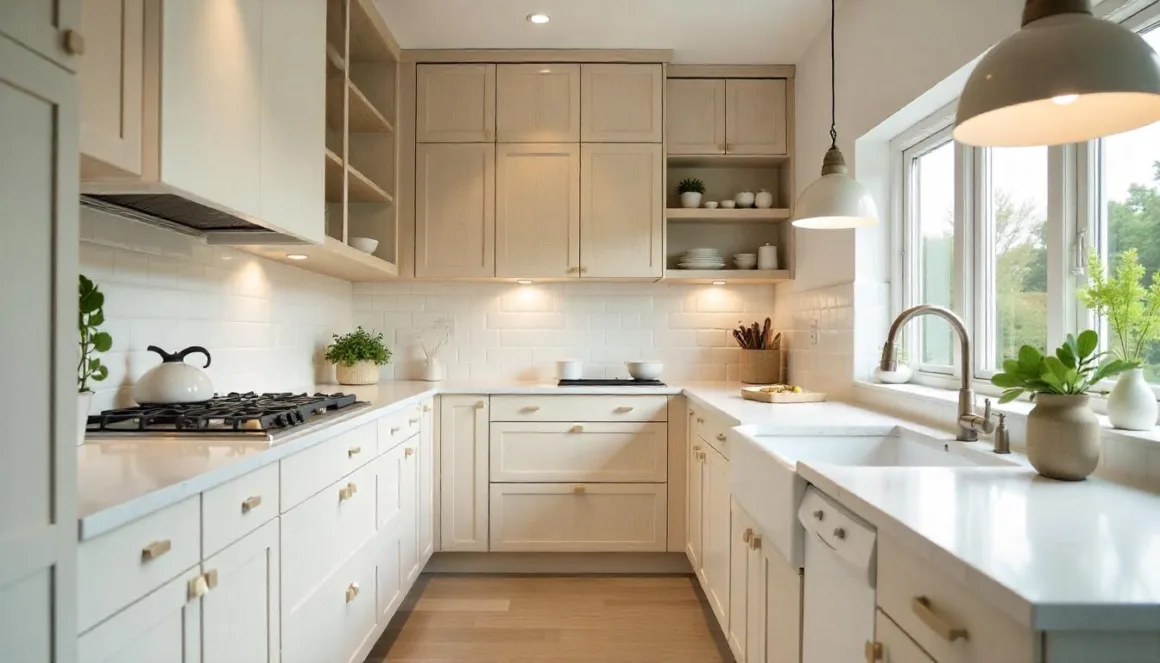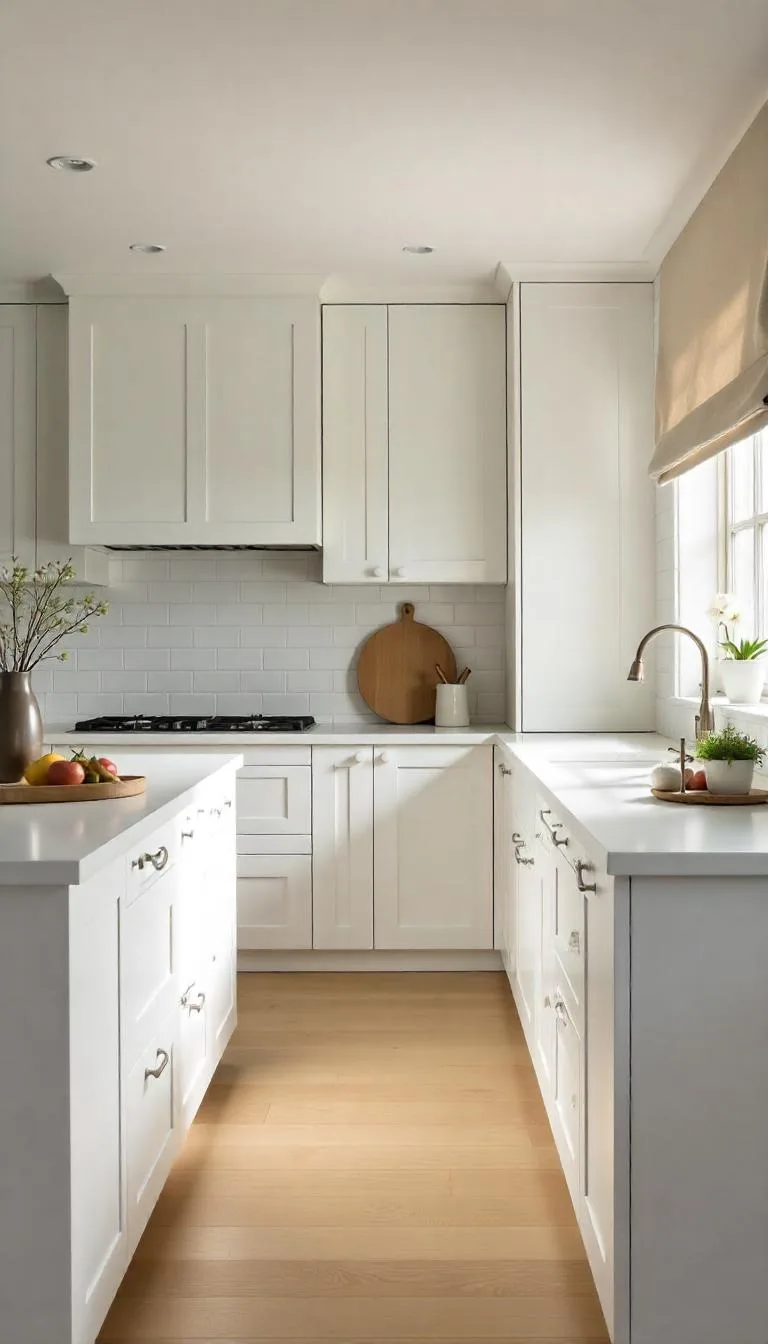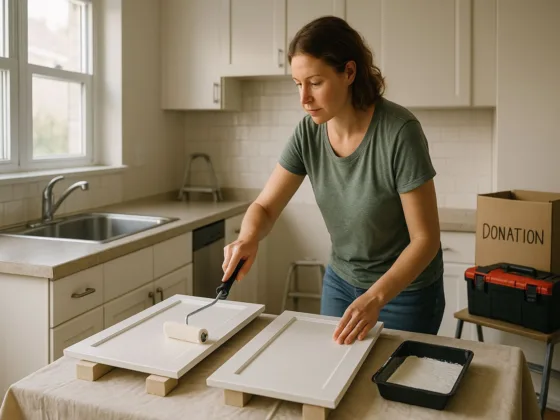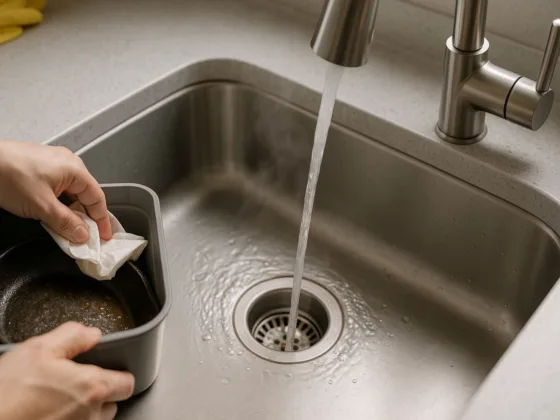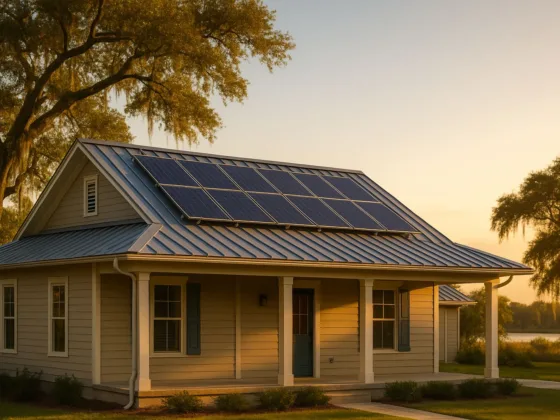Table of Contents Show
When it comes to modern kitchen design, few materials strike the perfect balance between elegance, warmth, and longevity quite like white oak kitchen cabinets. Over the past few years, designers and homeowners alike have been drawn to white oak for its organic texture, calming tone, and timeless appeal. Its subtle grain patterns and neutral coloring make it a standout material—one that doesn’t scream for attention, yet elevates every detail around it.
If you’re planning a remodel or building a kitchen from scratch, white oak may be the luxurious yet grounded choice your space needs. This article explores what makes white oak cabinets unique, why they’re trending, how to style them, and how to care for them to preserve their natural beauty for years to come.
What Makes White Oak Cabinets Unique?
White oak kitchen cabinets are known for their tight, straight grain and light golden-brown color with a slightly gray or taupe undertone. Unlike red oak—which has a more pronounced, reddish hue—white oak offers a softer, more neutral look that blends beautifully into both modern and traditional kitchens.
One of the biggest draws of white oak cabinets is their versatility in finish. Whether you choose a natural clear coat to highlight the raw wood texture, a wire-brushed matte finish for added character, or a cerused treatment for a touch of contrast in the grain, white oak adapts with grace.
In terms of durability, white oak is also a top-tier hardwood. It’s highly resistant to moisture, wear, and dents, making it an excellent choice for high-traffic areas like the kitchen. With proper care, white oak cabinets can last for decades, aging beautifully over time.
Why Designers and Homeowners Are Choosing White Oak
There’s a reason white oak has become a favorite among interior designers. It offers the best of both worlds: the visual lightness of Scandinavian minimalism and the organic richness of traditional wood cabinetry.
White oak’s natural tone adds warmth without heaviness, making it ideal for kitchens where a clean, inviting atmosphere is desired. It reflects light gently, giving your kitchen a bright, open feel without the starkness of pure white cabinets. This makes it especially appealing in transitional, Japandi, or modern farmhouse designs.
Its understated luxury also fits beautifully into high-end homes. Unlike glossy synthetic finishes or overly ornate cabinetry, white oak feels premium and grounded—an ideal backdrop for a space where both functionality and style matter.
In new builds and renovations, white oak is often used to create a custom-crafted look, even in semi-custom or modular kitchen systems. Its texture and variation give each installation a bespoke, designer feel.
Related reading: Oak Coffee Tables: A Guide to Finding Your Perfect Match
How to Style a Kitchen with White Oak Cabinets
One of the biggest benefits of white oak cabinetry is how effortlessly it integrates with a variety of materials and design elements.
For countertops, white oak pairs well with white quartz, light gray marble, or even concrete surfaces. These choices complement the wood’s natural tones while keeping the space feeling fresh and balanced. If you want to emphasize warmth, consider soapstone or honed granite for a darker contrast.
Backsplashes should support the wood’s organic feel. Simple subway tile, zellige tile, or tumbled stone work beautifully with white oak. These textures add subtle depth without competing for attention.
When it comes to hardware, you have room to play. Matte black handles create a modern contrast. Brushed brass or antique bronze brings warmth and vintage flair. For ultra-clean aesthetics, go with minimalist pulls or integrated handles that let the wood grain take center stage.
Open shelving in matching white oak or a contrasting material like steel or painted MDF can further enhance the visual rhythm of your kitchen. Adding greenery, ceramic dishware, or handcrafted décor pieces helps reinforce a grounded, lived-in atmosphere.
Best Color Combinations for White Oak Kitchens
Because white oak leans neutral and earthy, it acts as a perfect bridge between color families. Whether you want a bright, coastal-inspired palette or a moodier, modern kitchen, the wood adapts beautifully.
For a light and airy feel, pair white oak cabinets with soft white or cream walls and white countertops. Add touches of beige, sand, or gray in your accents to maintain a cohesive flow.
To create warmth and contrast, consider muted green tones like sage or olive on the walls or island. Deep navy, charcoal, or matte black make excellent secondary colors, providing drama without overpowering the oak’s natural elegance.
Flooring should complement the cabinetry without being too matchy. Wide-plank oak floors in a slightly different shade (lighter or darker) work well. Alternatively, concrete, tile, or natural stone flooring can create contrast and visual interest.
Related reading: How Different Woods Impact Your Restaurant Furniture
Maintenance and Longevity of White Oak Cabinets
White oak cabinets are known for their strength, but a few simple maintenance habits can keep them looking beautiful for decades.
Start by cleaning with a soft, damp cloth and mild soap. Avoid abrasive scrubbers or chemical cleaners that can dull the finish. For a deeper clean, use a wood-safe cleaner specifically formulated for cabinetry.
If your cabinets have a matte or natural oil finish, re-oiling them once or twice a year can help maintain moisture balance and enhance the grain. If they’re sealed with polyurethane or lacquer, a simple wipe-down is usually enough for upkeep.
To prevent sun discoloration, install UV-blocking window treatments or opt for shades that minimize direct sunlight on cabinetry. Also, use hood vents when cooking to reduce the buildup of grease and moisture near cabinet surfaces.
Thanks to its resistance to warping and cracking, white oak is a low-maintenance hardwood that continues to look better with age, making it a wise investment for any kitchen remodel.
Is White Oak Right for Your Kitchen?
If you’re seeking a material that feels warm, natural, and effortlessly elegant, white oak should be at the top of your list. It’s adaptable across design styles—from coastal to contemporary—and works well in both large open-concept kitchens and compact galley layouts.
Its light tone is particularly helpful in spaces that need to feel brighter or more spacious. Unlike trend-based colors or synthetic finishes, white oak’s natural texture and timeless tone make it a long-term design choice with lasting visual appeal.
Whether you’re leaning modern or classic, minimalist or rustic, white oak offers you the flexibility to design a kitchen that feels tailored, comfortable, and undeniably beautiful.
Conclusion
In a world where kitchen trends shift rapidly, white oak cabinets stand out by staying timeless. They deliver a soft, inviting elegance that feels both luxurious and livable. With their light grain, versatile color, and durable nature, white oak cabinets have earned their place as a go-to choice for designers and homeowners alike. If you want a kitchen that feels calm, cohesive, and filled with warmth—without sacrificing style or quality—white oak may just be the perfect foundation for your dream space.
